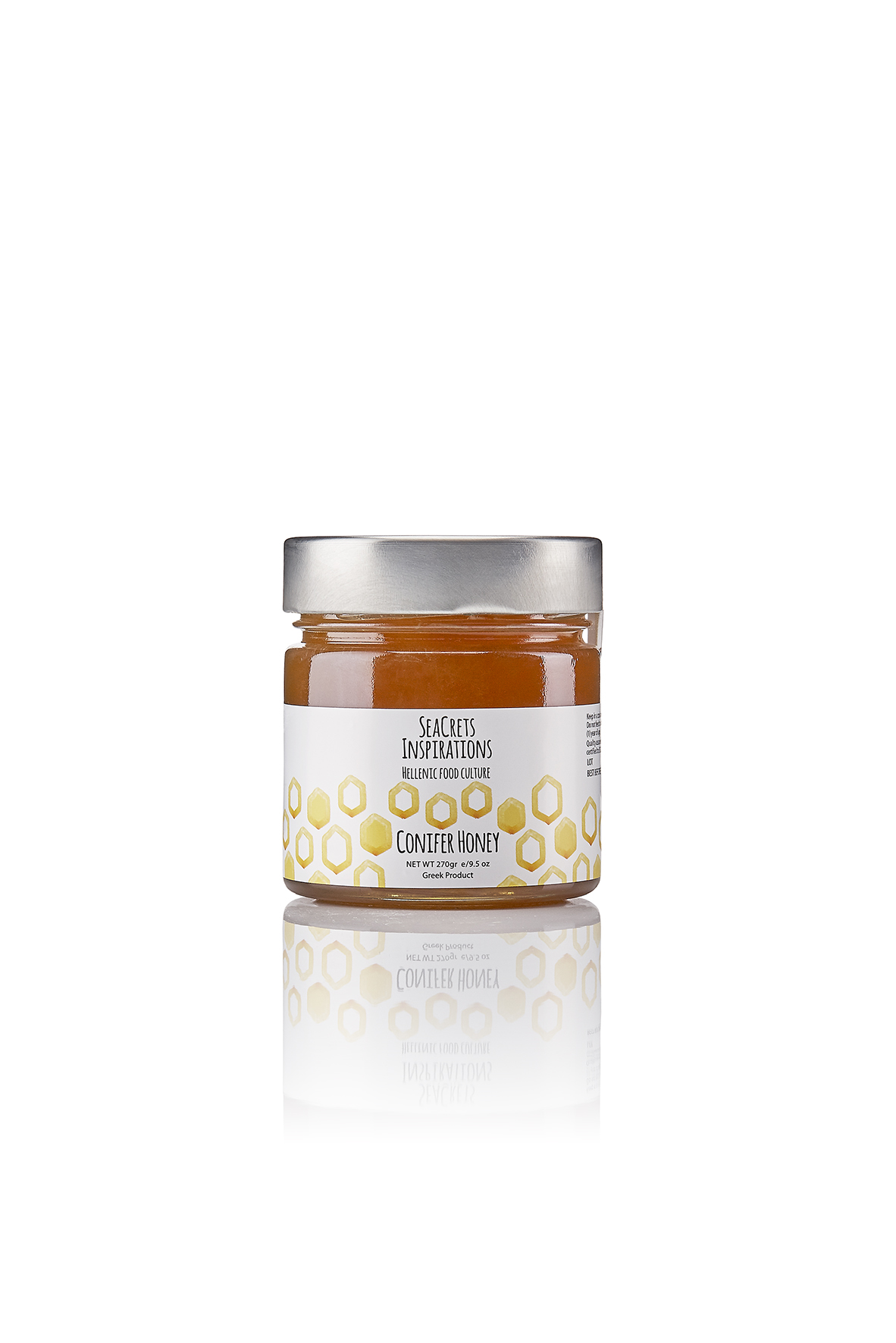€5.90
Honey is an aromatic and tasty superfood, which the ancient Greeks considered as a gift from gods.
It is a symbol of Health, Well-being and Longevity.
The temperate climate, the long sunshine duration and the wide variety of nectar and pollen plants, either native wild plants or cultivated, of Messinia, Mount Taygetus and Mani’s, guarantee the production of honey of the finest quality.
We collect top quality honey directly from the bee keepers, in its natural form, pure and unprocessed.
It is not filtered and therefore it is possible to find small traces of beeswax in the jar, however this adds high antibacterial properties.
Available in glass jar of : 270gr e 9.5 oz Net WT.
Greek Product.
Nutritional value and properties
It consists mainly of carbohydrates and more specifically in a larger proportion of the monosaccharides glucose
and fructose in equal proportions. Its sugars are immediately absorbed by the body, providing fast energy.
It contains more than 200 components in addition to carbohydrates. Contains a number of vitamins B vitamins that act as a shield of health
in the human body, vitamin C antioxidants, minerals and trace elements such as calcium, iron, potassium and sodium magnesium, zinc.
Helps treat colds, coughs and sore throats, as it has antimicrobial and antibacterial properties,
which are due to hydrogen peroxide. It was traditionally used to heal wounds, however today it is used even
in the faster healing of ulcers.
Preservation and storage conditions
Honey is properly preserved and stored resulting in greater shelf life.
The product retains its nutritional value when it remains in a closed package and in a dry,
cool, dark place and without strong odors (honey has the ability to absorb moisture from its environment
as well as is affected by its direct exposure to sunlight).
Honey crystallization
Honey crystallization is a completely natural process that occurs mainly in flower honey
and does not affect the nutritional value of the product. Honey with increased glucose content crystallizes
very quickly (e.g. heather honey) in contrast to honey with a lower amount of glucose where it crystallizes at
a slower rate or not at all (eg pine honey). However, in case you want to liquefy the honey that has crystallized,
you should place the package with the honey in a container with heated water which will be constantly stirred so
that it heats evenly.The temperature of honey should not be higher than 45oC, as the increased temperature
can have negative effects on its color, aroma and taste

This website uses cookies to enhance your experience. Some are essential for site functionality, while others help us analyze and improve your usage experience. Please review your options and make your choice.
If you are under 16 years old, please ensure that you have received consent from your parent or guardian for any non-essential cookies.
Your privacy is important to us. You can adjust your cookie settings at any time. For more information about how we use data, please read our privacy policy. You may change your preferences at any time by clicking on the settings button below.
Note that if you choose to disable some types of cookies, it may impact your experience of the site and the services we are able to offer.
Some required resources have been blocked, which can affect third-party services and may cause the site to not function properly.
